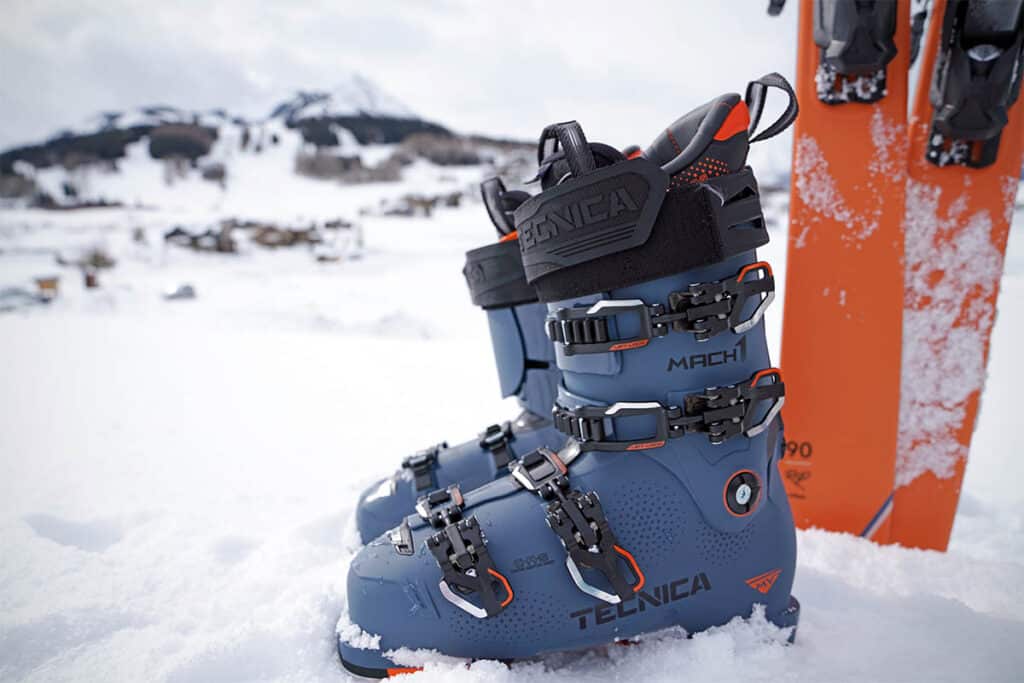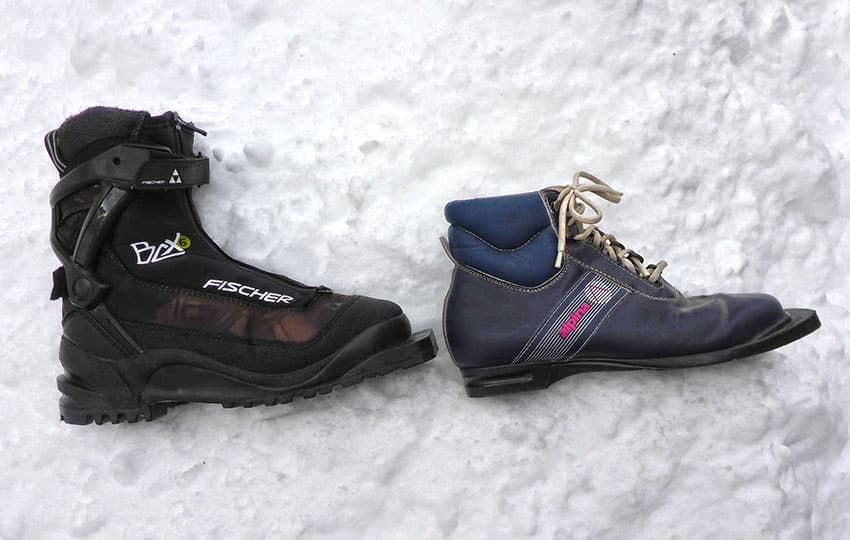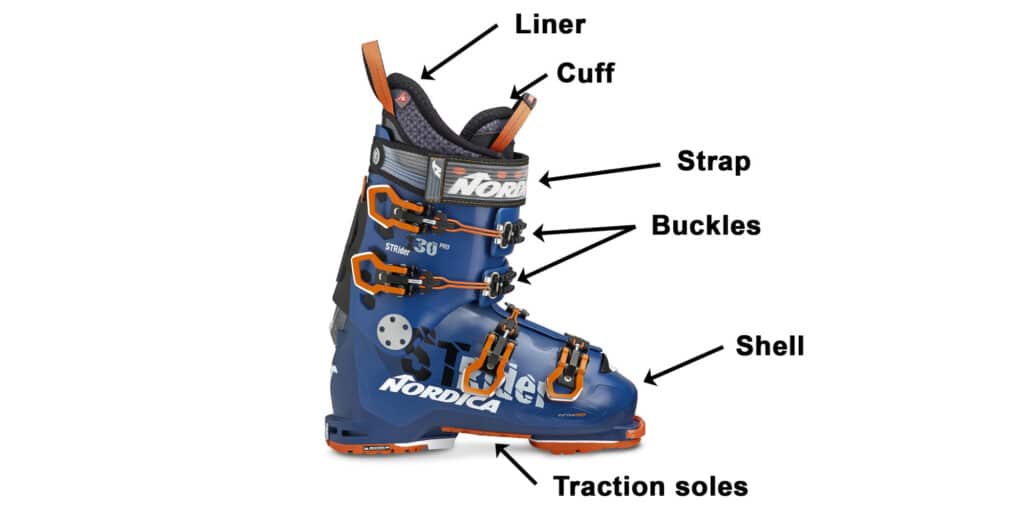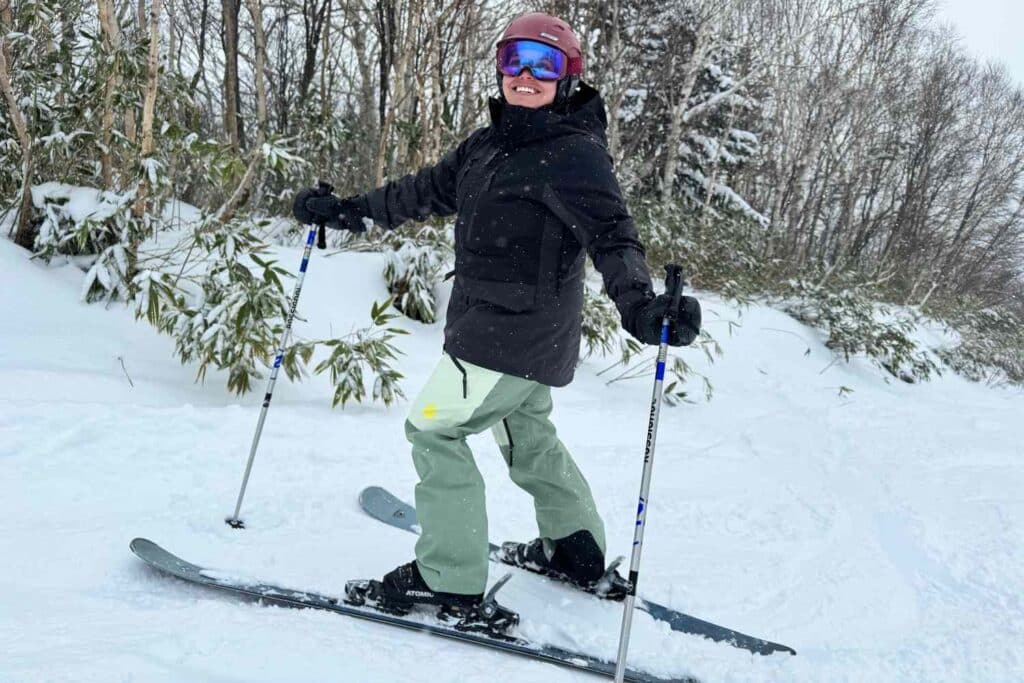Table of Contents
Choosing the right ski boots can feel pretty overwhelming, right? I remember standing in a shop surrounded by dozens of types of ski boots, wondering how in the world I was supposed to pick the “right” pair. There were features I didn’t understand, opinions flying in every direction, and a whole lot of confusion.
But trust me—you don’t need to stress about it. I’ve learned that once you break things down simply (and skip the jargon), the whole process becomes a lot easier. So whether you’re upgrading your old pair, buying your very first boots, or just trying to figure out what type of ski boot do I need, I’ve got you covered.
Let’s get into it and make this whole boot-choosing journey painless—and maybe even fun.
Why Ski Boots Matter More Than You Think?
Ski boots do way more than just keep your feet strapped to your skis. In fact, they decide how smoothly you turn, how quickly you stop, and how much control you have on every run. I learned pretty quickly that the right boots can make skiing feel effortless… and the wrong ones? Well, those can send you straight to a list of common ski injuries faster than you’d like.
Here’s why your boots matter so much:
- They transfer your movements directly to your skis
- They keep your ankles stable and supported
- They help you stay balanced on uneven terrain
- They boost your confidence (because comfort = control)
That’s exactly why understanding the types of ski boots isn’t just helpful—it’s essential if you want to enjoy your time on the mountain.
The Main Types of Ski Boots

Credit: switchbacktravel.com
Let’s start with the big categories. These are the different ski boot types you’ll see most often.
Alpine Ski Boots (Downhill Boots)
Alpine boots are the most common. They’re stiff, supportive, and built for groomed runs and resort skiing.
Why people choose them:
- Most stable option
- Best for carving
- Good for all skill levels
If you’re wondering what type of ski boots should I buy, this is the default choice for most resort skiers.
Touring Ski Boots (Backcountry Boots)
These boots let you hike uphill with “walk mode” and then ski downhill.
Key features:
- Lightweight
- Flexible when walking
- Compatible with pin or hybrid bindings
If you love exploring untouched snow, a new type of ski boots to consider is the modern lightweight hybrid touring boot.
Freestyle Ski Boots
Built for terrain parks, jumps, and rails.
Why riders like them:
- Softer flex
- Better shock absorption
- Offers more freedom of movement
They’re great if you like playful skiing.
Race Ski Boots
These are stiff, tight, and extremely responsive.
Best for:
- Expert skiers
- High-speed carving
- True racing
Not ideal for beginners. These boots can be why some people ask, why are ski boots so uncomfortable?
Kids Ski Boots
Kids need softer, lighter boots that focus on comfort and growth.
What to look for:
- Adjustable sizing
- Softer flex
- Easy buckles
Kids learn fast when their gear is comfy and confidence-boosting.
Cross-Country Boot Styles

Credit: tahoetrailguide.com
Downhill boots aren’t your only option. Let’s look at the different types of cross country ski boots.
Classic Cross-Country Ski Boots
Made for the traditional forward-glide motion.
Features:
- Flexible soles
- Lightweight
- Great for long, steady trails
Skate Cross-Country Ski Boots
Built for skating-style skiing.
Features:
- Stiffer sole
- More ankle support
- Excellent power transfer
If you’re searching for types of cross country ski boots for competition or speed, go with skate boots.
Backcountry Nordic Boots
These are tougher and warmer.
Why choose them:
- Thick insulation
- Sturdy build
- Designed for snowy, remote trails
Understanding Ski Boot Styles and Fit

Credit: freeride.com
Knowing the categories is only half the battle. Fit matters—probably more than anything else.
Ski and Boot Sizing Basics
Getting the right ski boot size eliminates pain and boosts control. Here’s what matters:
Mondo Point Sizing
Ski boots use Mondo sizing, which measures the length of your foot in centimeters.
Width (Last)
Boots come in narrow, medium, and wide options.
Flex Rating
Higher flex = stiffer boot. Lower flex = softer and more forgiving.
If you’re thinking, how do I know my ski boot size, a boot fitter or accurate foot measurement is your best friend.
How to Choose Ski Boots (Without Stress)
Wondering how to choose ski boots or how to select ski boots? Use these tips.
Know Your Skill Level
- Beginner → soft to medium flex
- Intermediate → medium flex
- Expert → medium to stiff
Match Boots With Your Skiing Style
- Park? Choose freestyle.
- Resort carving? Alpine.
- Backcountry? Touring boot.
Consider Your Budget
Boots vary widely. Ski boot cost and ski boot price depend on features, brand, and tech.
Comfort Over Everything
If they hurt in the store, trust me, they’ll hurt on the mountain.
Ski Boot Cost: What to Expect

Credit: travelandleisure.com
You’ll see a wide price range.
Entry Level
- Affordable
- Softer
- Beginner-friendly
Mid-Range
- Better fit
- Improved performance
- More durable
High-End
- Racing or touring features
- Maximum precision
- Premium construction
If you’re on a budget, reputable aftermarket liners or insoles can make cheaper boots feel premium.
Are Ski Boots Universal?
Short answer: No. Boot soles must match your bindings. Alpine, touring, and hybrid boots all have different compatibility rules.
That’s why the question are ski boots universal is common. Always double-check your setup. Oh and you can always pair them with cute skiing jackets!
How Long Do Ski Boots Last?
Most boots last 80–100 days on snow, or about 5–8 years for casual skiers. Heavier use, intense flexing, or shell cracking means it’s time for new ones.
What About a Ski Boot Bag?
A ski boot bag makes travel easier. Look for:
- Ventilated boot compartments
- Waterproof bottom
- Backpack straps
- Extra pockets for gloves and goggles
If you travel often, a sturdy bag is worth it. It also protects your investment—especially if you’ve found the best type of ski boots for your ski style.
Ski Boot Comfort: Yes, It’s Fixable
If you’ve ever wondered why are ski boots so uncomfortable, you’re not alone. But most discomfort comes from poor fit, not the design.
Try:
- Custom insoles
- Heat-molded liners
- Adjusting buckles
- Proper socks
Never wear thick socks. Thin, moisture-wicking socks are magic.
FAQ’s
Let us answer some of your questions!
What type of ski boots should I buy as a beginner?
Go for softer-flex alpine boots. They’re easier to control and more comfortable.
How do I choose the right size?
Measure your foot in centimeters. That’s your Mondo size. Try on several widths to find the best fit.
Are ski boots supposed to feel tight?
Yes, but not painful. Snug is good. Numb toes are not.
Can I use the same boots for touring and downhill?
Yes—if you buy hybrid boots. But check your binding compatibility.
What’s the best way to carry my boots when traveling?
Use a quality ski boot bag with ventilation and padded straps.

